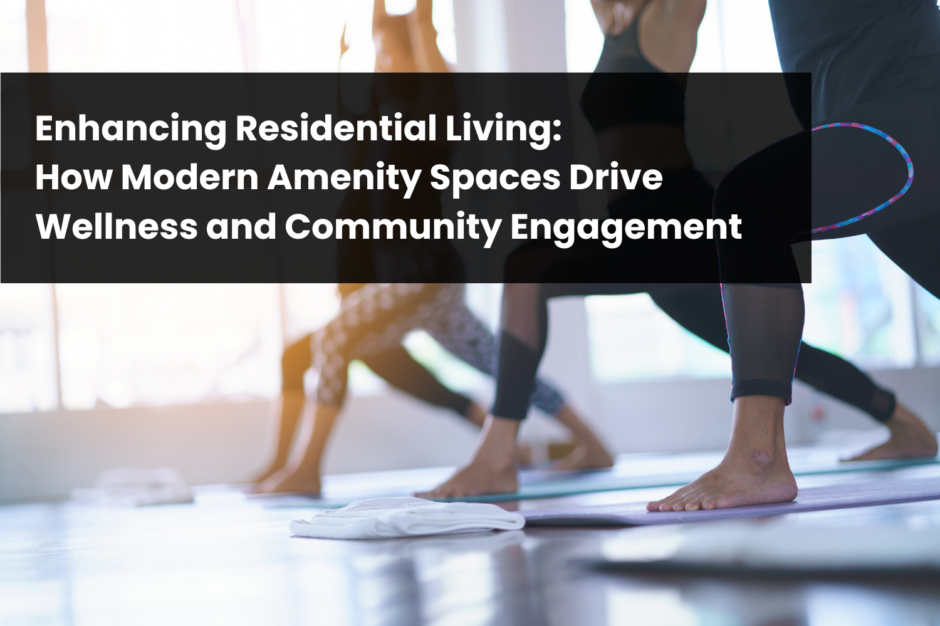Enhancing Residential Living: How Modern Amenity Spaces Drive Wellness and Community Engagement
Planned Companies

Thanks for keeping up with the CREtech Community in the News! For more news about members of the CREtech Community, follow us on Linkedin.
The significance of amenity space within residential communities is at the forefront of this growing and evolving industry. Prospective homeowners and renters make buy and stay decisions based on the perception of value derived from what the property and community features. As the landscape of residential living continues to advance, the demand for amenities that cater to a wide array of lifestyle needs is on the rise.
Recent trends highlight the importance of amenities and their contribution to overall resident satisfaction and wellness. Communities that lack in providing desired amenities or fail to align them with consumer interests risk detrimental effects on their sales, referrals, profitability and brand reputation. The planning and implementation of such amenities play a crucial role in maintaining a community's appeal and value.
The integration of health and wellness amenities has transitioned from a luxury to a necessity. Sleep and nutritional programs, meditation, stretching and fitness classes have become much more readily available. As have classes in floral arrangements, painting and ceramics, cooking and others, all conveniently offered right in the building. The wellness real estate market is projected to hit a staggering $887.5 billion by 2027, according to The Global Wellness Summit*. This growth underscores the increasing demand for living spaces that offer more than just the basics. A 2022 NMHC/Kingsley Apartment Resident Preferences Report found that 76% of apartment renters valued high-quality fitness facilities, and 55% showed interest in wellness programs, emphasizing the importance of health-centric amenities in their decision-making process.
The evolution of active adult buyer demographics and lifestyle programming trends has led to the introduction of a diverse range of amenities. Modern active adult communities are moving beyond traditional offerings to include state-of-the-art fitness centers, full-service spas, business centers/spaces as the hybrid work model continues to be available, and amenity-rich clubhouses that cater to a health-conscious maturing generation. These amenities not only serve functional purposes but also act as social hubs, promoting community interaction and cohesion. Outdoor amenities have expanded to include features like zero-depth swimming pools, barbeque and lounging areas and pickleball courts, emphasizing the importance of open, functional community spaces.
Multi-generational communities, catering to a broader resident demographic, have similarly embraced a variety of indoor and outdoor amenities. From performance theaters and gymnasiums to outdoor picnic areas and sport courts, these amenities are designed to meet the needs of all age groups within the community. Contemporary offerings such as indoor climbing walls and large-scale aquatic complexes reflect the growing demand for diverse and engaging amenity spaces that enrich the living experience for all residents.
According to Abbie Newman, President of LIV Unlimited, “amenity spaces need to be conceptualized today, they need to have intention. Gone are the days that developing lounges and other innocuous spaces with different seating arrangements are enough. The statistics show that spaces without intention are not used, and activation is the key.” The usage of amenities is being enhanced through the advances of technology, not only to engage residents but also to evaluate the effectiveness of these offerings. By harnessing data analytics, community managers can make informed decisions that significantly enhance the communal atmosphere, ensuring that the selection and scheduling of amenities resonate with residents' preferences and lifestyles.
This approach fosters a stronger sense of community and inclusivity, making residents feel more connected to their living environment. Amenities such as yoga and meditation sessions are pivotal in this regard, as they directly contribute to the mental well-being of the community members. By leaning into these and other mental health-focused amenities, residential communities can create a nurturing and supportive environment that prioritizes the holistic well-being of every resident, thereby enhancing the overall community feel and experience.
In conclusion, the shift towards amenity rich residential communities highlights a clear trend: amenities are no longer just add-ons but essential components that significantly influence buyer/renter decisions and enhance the living experience. As communities continue to evolve, the thoughtful planning and implementation of these spaces will remain pivotal in meeting the changing needs and preferences of residents. This in turn will ultimately shape the future of residential living.
As we continue to witness the transformation of residential living, Planned Companies remains at the forefront, dedicated to enhancing the quality of life for the residents and tenants we so proudly service. Our commitment to innovation and community well-being positions us as a leader in servicing the development of vibrant, inclusive communities that residents are proud to call home. For more information please do not hesitate to reach out.
Contact Planned Companies:
- Email: marketing@plannedcompanies.com
- Phone: (973) 739-0080
- Website: www.plannedcompanies.com
Together, let's shape the future of residential living.
Sources:

